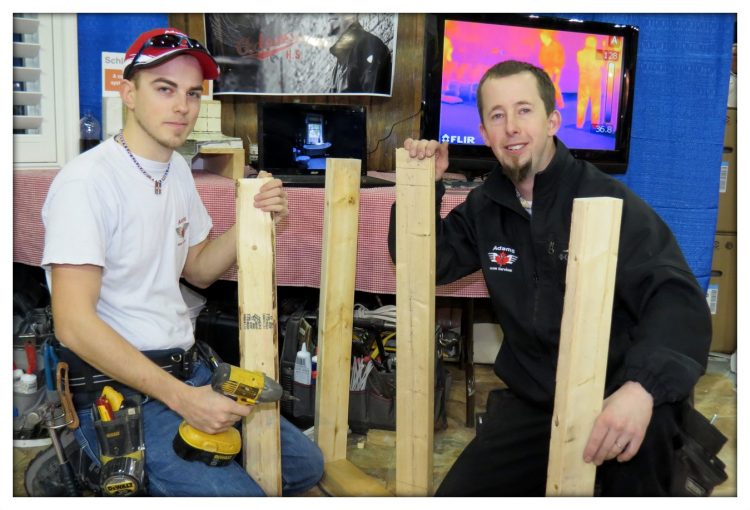No products in the cart.
How to fix a leaky foundation by Joe Adams
I would like to thank everyone who stopped by to say hello at this years’ Chamber of Commerce Spring Home and Leisure Show. We had a fantastic turnout and a ton of great exhibitors made for a great show and a good time was had by all. Thank you all for your good tidings and I hope that I was able to answer all your questions. I look forward to seeing you there again next year.
Dear Joe,
I have a leaky basement. With the fast spring thaw a have a river or two running through my basement. I need to look into getting this fixed but I don’t know if digging outside is the best way to fix it cause I know this costs a lot of money or if I should look into this new crack injection fix; I see these companies popping up all over the place. Do you have any recommendations?
Love your column,
Roger
How to fix a leaky foundation:
Thank you for your great question Roger,
Well those are your options in a nutshell. Digging to apply a proper waterproofing is costly and messy. To do a proper job the waterproofing should be done to a minimum of the entire length of the offending wall. Preferably the entire foundation should receive the same treatment to prevent future leaks from arising. This will result in all kinds of disruptions to the outside of the house including but not limited to dug up driveways, flower beds, steps and walkways, damaged water and sewer lines, decks that have to be removed and so on.
 You could also install what is called an interior weeper. Essentially you are installing a membrane on the inside of the wall and a weeping tile at the base of the inside of the wall that drains into a sump that will need to be installed if you don’t have a functional weeper that drains into the municipal sewer. This will require breaking the floor around the entire interior perimeter of the house and digging to install a weeping tile and a sump. I don’t like this option because it means that the foundation is allowed to keep leaking and is not actually waterproofed. Thus, the foundation remains perpetually wet and therefore suffers all the ills that things which stay perpetually wet will suffer: deterioration, mould and mildew.
You could also install what is called an interior weeper. Essentially you are installing a membrane on the inside of the wall and a weeping tile at the base of the inside of the wall that drains into a sump that will need to be installed if you don’t have a functional weeper that drains into the municipal sewer. This will require breaking the floor around the entire interior perimeter of the house and digging to install a weeping tile and a sump. I don’t like this option because it means that the foundation is allowed to keep leaking and is not actually waterproofed. Thus, the foundation remains perpetually wet and therefore suffers all the ills that things which stay perpetually wet will suffer: deterioration, mould and mildew.
Your final option and definitely the new kid on the block is the polyurethane crack injection. I say it’s new, but in actual fact it has been around for about 25 years. It is done a couple of ways, either manually at about 70 psi (low pressure) or mechanically at about 2500psi (high pressure), to force a curing compound into the crack. Both systems work well in the hands of a well-trained contractor. Once again, as I always say, get a referral. This becomes increasingly important in a niche industry like this where anyone can take a course and buy the equipment online. Find out who your neighbours and friends have had good results with and deal with someone you can trust. The processes are essentially the same: holes are drilled along the length of the crack and a two part polyurethane filler is pumped into the crack through orifices which remain in the wall when the procedure is finished. The product can even be applied to actively seeping cracks. Once the material is cured the crack is mended. Periodically it may take a second application to fix problem cracks which may continue to leak after the first treatment. Once the crack is water tight, most companies offer very competitive warranties for this procedure, some as much as lifetime transferable. The only downfall of this procedure is it cannot be used on block type foundations unlike all surface treatments. Similar treatments are available, however, that treat block foundations. In similar fashion, the technician drills holes in the foundation, this time directly through to the outside and injects a different type of expanding chemical which spreads more than a foot in all directions to coat and waterproof the foundation from the outside.
Of all your foundation waterproofing options, injection is by far the most cost effective not to mention least disruptive. Be sure you get multiple quotes and investigate which process will work best for your personal situation.
All the best,
Joe Adams







